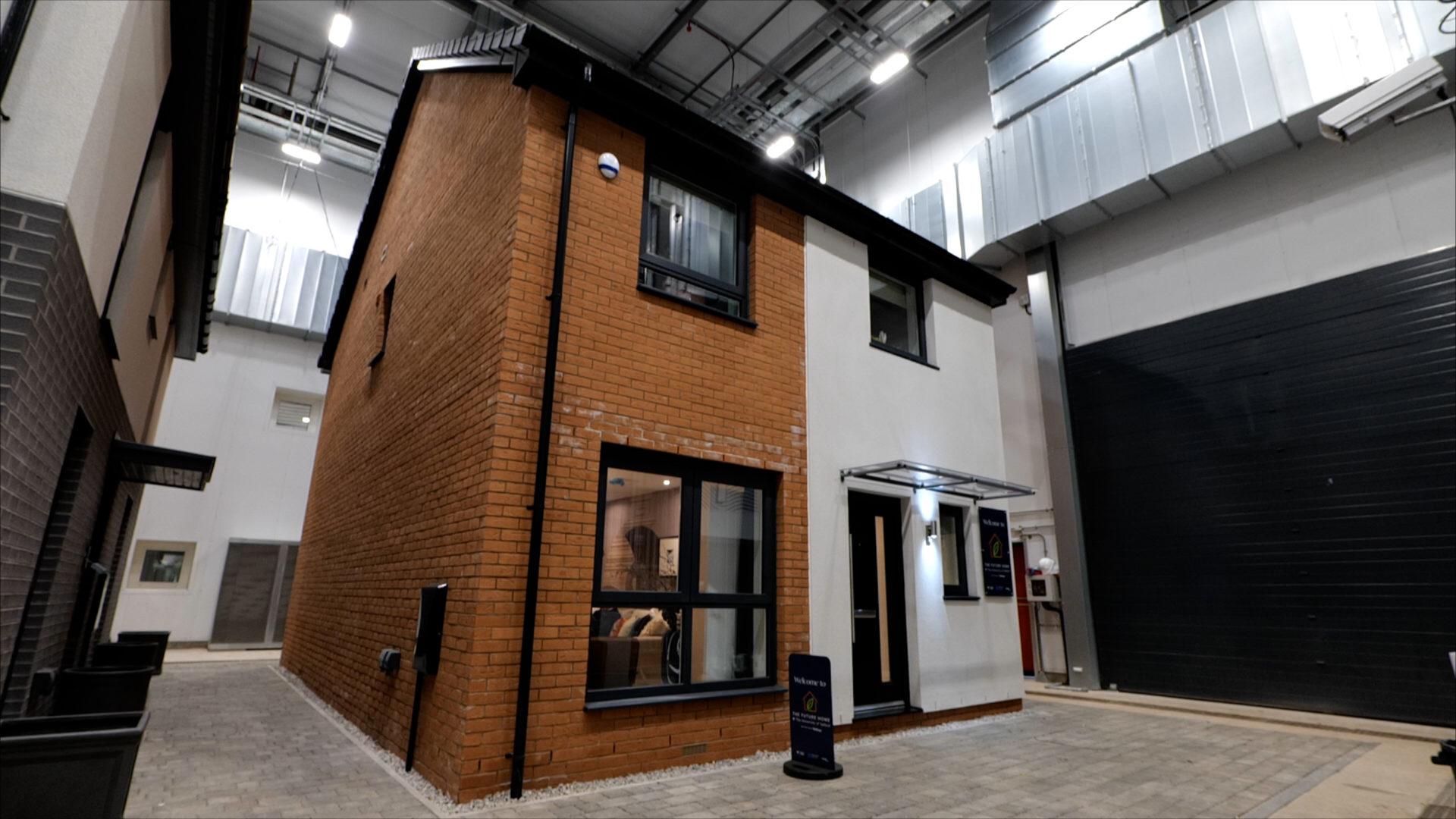
Housebuilders Bellway and Barratt Redrow have worked with Salford University on the largest research project ever carried out on electrical heating systems under controlled conditions.
The results show that air source heat pumps can provide energy-efficient warmth for new homes for less than £2 a day.
During the Future Homes study, researchers at the University of Salford’s Energy House 2.0 facility worked with the housebuilders and Saint-Gobain UK and Ireland over 12 months to test 14 different heating systems to see which would heat consumers’ homes the best at the lowest cost.
The systems tested covered a range of technologies, including infrared heat panels, air source heat pumps, underfloor heating, skirting board heating, and traditional radiators.
Energy House 2.0
The research looked at two different heating patterns: 24-hour constant heating; and hours between 07:00-09:00 in the morning and 16:00-23:00 at night, which is currently used in the standard energy model and is typical for homes in the UK.
The Energy House 2.0 research facility is a specially built climate chamber that recreates temperatures ranging from -20 deg C to +40 deg C, as well as simulating wind, rain, snow and solar radiation.
The chamber allowed Barratt Redrow, Saint-Gobain and Bellway to test methods of construction and products at temperatures that would represent anything from a Nordic winter to an African summer.
It can also simulate the weather conditions in 95% of the world’s current climates, as well as the climates predicted in the future.
Important research
Researchers hope that the findings from the research will inform new buyers, existing homeowners, renters and landlords to understand the most efficient ways to heat homes when gas boilers begin to be phased out in new homes from 2025. Existing homes have until 2035 to replace gas boilers.
Oliver Novakovic, director of technical and innovation at Barratt Redrow, said: “The Energy House 2.0 research is one of the most important R&D projects that Barratt Redrow has ever undertaken. It will inform us about the homes that we build in the next 20, 50 and 100 years. We will see more extreme weather events and we need to ensure that the fabric of the homes we build, and the heating and cooling emitters that we fit, provide the most temperature-efficient and cost-effective outputs for residents.”
Jamie Bursnell, head of technical and innovation for Bellway, said: “The heating tests at Energy House 2.0 have accelerated our understanding of how new homes can be heated through electric sources. The comparison of different combinations of heating technologies working in a controlled environment has highlighted some highly efficient systems. We will now refine and test further, and the research will inform our work with new technologies on the live developments where these are already being trialled.”
The study was funded under the UKRI’s Greater Manchester Innovation Accelerator Programme.
Comments
Comments are closed.












Very interesting, but this study (apparently) only looked at new build HOUSES…..what about flats and the older (the majority) houses unable to significantly upgrade insulation? Not to mention that our electricity costs are the highest in Europe and probably in the developed world.
I moved to a new build terrace house 12 months ago with an ASHP (Daikin) and 1250 sq ft, south facing and the summer usage was £3.50 to £4 per day. Currently it’s £4.50 to £5 per day. Underfloor heating GF and Wet radiators to FF.
£2 per day is not achievable with current electricity charges.